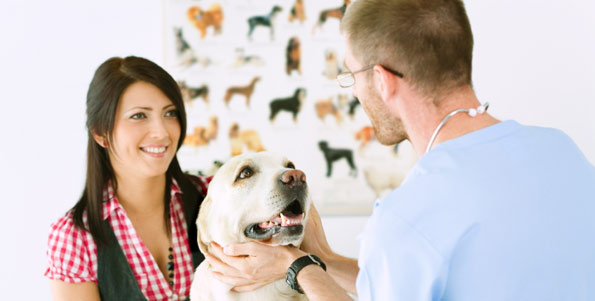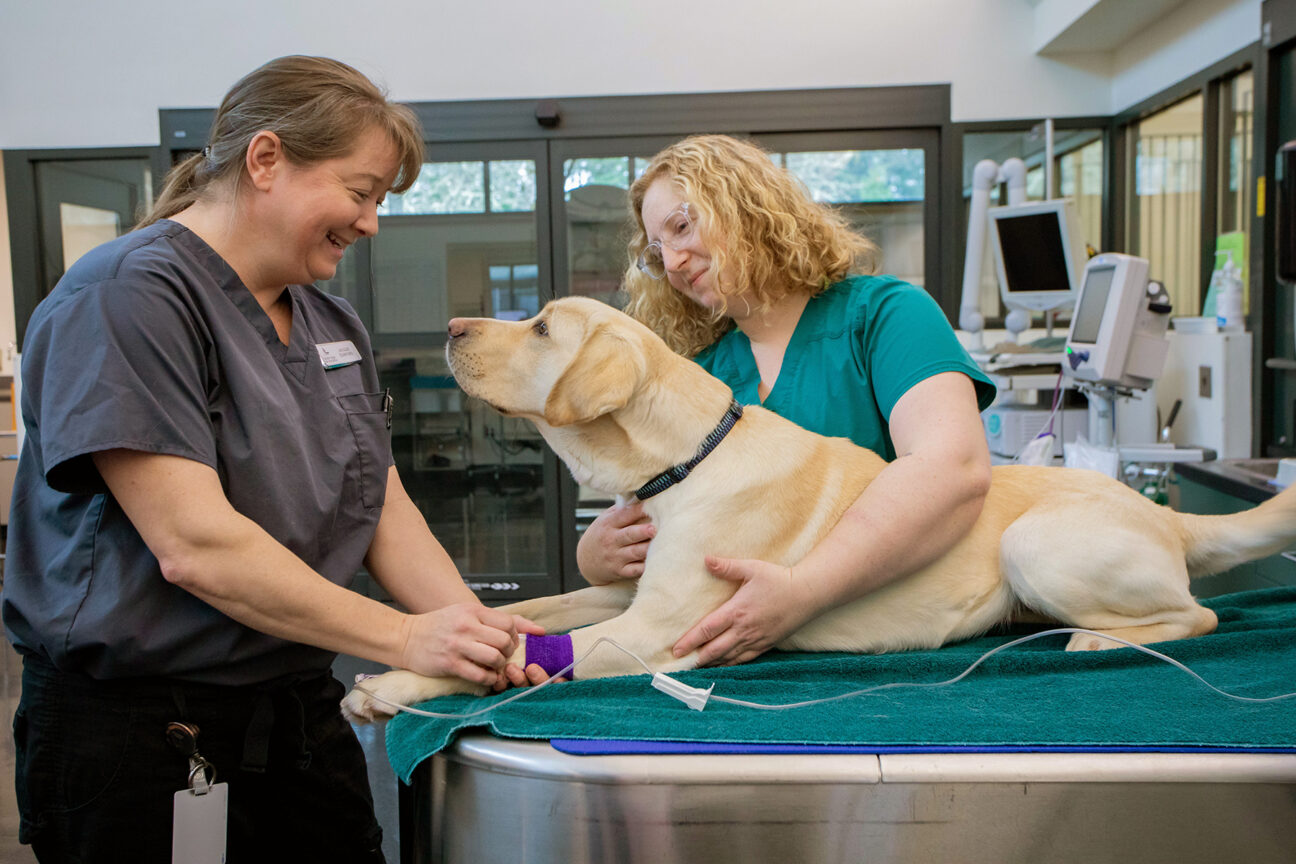Post-Op Recovery Guide After Your Dog’s tplo surgery
Post-Op Recovery Guide After Your Dog’s tplo surgery
Blog Article
Everything About Vet Surgical Procedure: Recognizing the Significance of Professional Take Care Of Your Family pets
Veterinary surgical treatment is a vital element of pet dog healthcare. It incorporates various treatments, from regular optional surgical treatments to urgent treatments. Comprehending the ins and outs of these surgical treatments can help pet proprietors make informed choices. The prep work, execution, and healing stages are crucial for guaranteeing the wellness of animals. With correct knowledge, owners can navigate the complexities of vet treatment. What factors should be taken into consideration prior to a pet goes through surgery?
Sorts Of Vet Surgeries
When a pet dog requires surgical treatment, understanding the different kinds of vet surgical procedures can aid animal owners make informed decisions. Vet surgical procedures can be generally classified into three main kinds: optional, urgent, and emergency situation surgical procedures. Optional surgeries, such as spaying or neutering, are prepared treatments that are not quickly deadly. Immediate surgeries, like those for foreign body elimination, must be carried out quickly yet are not life-threatening in the moment. Emergency situation surgical procedures, such as those resolving extreme trauma or inner bleeding, are essential and call for immediate attention.Additionally, surgical treatments can differ in complexity, ranging from minimally invasive laparoscopic procedures to extra substantial open surgical treatments. Each kind of surgical procedure lugs its very own risks and recuperation procedures. Understanding these classifications permits pet dog proprietors to involve in significant discussions with veterinarians, causing far better end results for their cherished family pets.
Preparing for Your Family pet's Surgical treatment
Planning for a pet dog's surgery entails an extensive checklist to assure all essentials are covered. Effective interaction with the veterinarian is essential for recognizing the procedure and any type of required pre-operative actions - tplo surgery. Furthermore, having clear post-operative care guidelines will certainly help proprietors provide the most effective assistance for their recouping pets
Pre-Surgery Checklist Essentials
Ensuring a smooth surgical experience for a family pet calls for careful prep work and attention to detail. A pre-surgery list is necessary for pet dog owners to comply with. First, verifying the scheduled surgery date and time is crucial. Owners need to likewise confirm that their pet has actually not eaten according to the veterinarian's directions, generally for 8-12 hours before surgical treatment. Gathering necessary clinical documents, consisting of vaccination background, is essential for the veterinarian's evaluation. It is additionally recommended to prepare a comfy area in the house for the pet's healing after surgical treatment. Finally, proprietors need to have a strategy for transport to and from the vet clinic, making certain that the family pet is safe and comfy throughout the journey. Complying with these actions can substantially improve the medical experience.
Interacting With Your Veterinarian

Reliable interaction with the vet is necessary for an effective surgical experience for family pets. Owners must be prepared to review their animal's medical history, consisting of any type of pre-existing conditions, medicines, and allergic reactions. This information assists the veterinarian examine dangers and tailor the surgical plan as necessary. Furthermore, pet dog proprietors need to ask questions concerning the treatment, anesthesia, and anticipated outcomes to ensure they completely comprehend the procedure. Clearing up any kind of doubts can relieve anxiety for both the animal and the owner. It is additionally essential to interact any behavior changes or issues observed in the pet leading up to the surgery. Inevitably, clear discussion cultivates count on and partnership, guaranteeing that pets get the very best possible care throughout their surgical trip.
Post-Operative Treatment Instructions
After talking about the operation with the veterinarian, animal owners need to concentrate on post-operative care instructions to promote a smooth recovery for their family pets. These instructions commonly include keeping track of the surgical site for signs of infection, such as inflammation or discharge. Animals might need to be kept one's cool and constrained to protect against too much activity that can interfere with healing. Pain management is important, so owners ought to adhere to the vet's support on administering medications. Additionally, nutritional constraints might be encouraged to stay clear of gastrointestinal distress. Routine follow-up consultations are essential to ensure correct recovery and resolve any kind of issues. By sticking to these post-operative care instructions, family pet proprietors can greatly add to their pet's healing and general well-being.
The Surgery Explained
The medical procedure for animals encompasses critical actions that ensure their security and recovery. Pre-surgery preparations are necessary for lessening risks, while post-operative care guidelines play an essential role in promoting healing. Comprehending these parts assists pet dog owners browse the medical experience better.
Pre-Surgery Preparations
Prior to an animal undergoes surgical procedure, a number of important prep work should occur to assure a secure and successful procedure. First, a complete vet examination is important to analyze the pet dog's general health and recognize any kind of possible risks. This may consist of blood examinations, imaging, or other diagnostics. The vet will certainly also go over anesthetic choices customized to the family pet's details requirements. Furthermore, animal proprietors are normally instructed to keep food and water for a specified time prior to surgical treatment to reduce the risk of issues throughout anesthetic. It is very important for owners to supply a total clinical history, consisting of any medications or allergies, ensuring the surgical team has all needed details. Proper communication and adherence to pre-surgery guidelines can greatly boost the outcome of the procedure.
Post-Operative Care Guidelines
Appropriate post-operative care is crucial for making certain a pet's healing complying with surgical treatment. After the treatment, family pets need to be monitored carefully for any type of indicators of problems, such as excessive blood loss, swelling, or uncommon behavior. It is essential to adhere to the vet's instructions concerning medicines, consisting of discomfort relievers and prescription antibiotics. Animals need to be maintained in a peaceful, comfortable setting to minimize stress and anxiety and promote healing. Restricting task is important; short, leashed strolls may be needed, however jumping or running must be stayed clear of. Normal follow-up consultations ought to be arranged to evaluate the healing procedure. In addition, the surgical site must be maintained tidy and completely dry, with any type of indications of infection reported to a veterinarian promptly. Complying with these guidelines enhances recuperation results.
Anesthetic and Pain Monitoring
Reliable anesthesia and pain administration are important parts of veterinary surgical procedure, making sure that pets stay comfortable and risk-free throughout the treatment. Veterinarians examine each pet's individual needs, taking into consideration variables such as age, weight, health and wellness condition, and the type of surgical procedure being performed.Anesthesia procedures commonly include a mix of pre-anesthetic medicines, induction representatives, and inhalant anesthetics, permitting for exact control over the animal's level of awareness. Tracking during surgical treatment is vital; veterinarians continually observe essential indications to address any vet med type of potential problems promptly.Pain monitoring techniques may involve opioids, non-steroidal anti-inflammatory medicines (NSAIDs), and anesthetics, customized to the animal's details circumstance. This multifaceted strategy helps decrease discomfort and promotes a smoother surgical experience. By focusing on efficient anesthetic and discomfort monitoring, vet professionals enhance the general well-being of animals going through surgeries, guaranteeing they obtain the greatest criterion of treatment.
Post-Operative Treatment and Recuperation
Following surgical procedure, the emphasis changes to post-operative care and recovery, which is vital for making certain a pet's risk-free return to normal activities. During this period, pets need a quiet, comfortable setting to help healing. Proprietors should carefully monitor their family pets for any signs of discomfort or unusual behavior.Veterinary guidelines usually include certain instructions connected to drug administration, wound care, and nutritional modifications. It is crucial to stick to these recommendations to decrease issues and promote recovery. Pet dogs may need to be restricted from vigorous tasks, such as running or leaping, during their recuperation period (veterinary cardiologist near me).Regular follow-up consultations with the vet permit for tracking of the pet's progression and prompt modifications to the care strategy. Offering emotional assistance and companionship can also enhance a family pet's recuperation experience, aiding to relieve anxiety and anxiety. On the whole, thorough post-operative treatment plays a significant function in accomplishing an effective healing
Recognizing Problems After Surgery
Exactly how can animal owners identify complications after surgery? Understanding of specific indicators is important for guaranteeing the well-being of pet dogs during healing. Common signs consist of extreme swelling, inflammation, or discharge at the medical website, which might indicate infection. In addition, consistent discomfort, suggested by grumbling or unwillingness to relocate, need to motivate immediate interest. Changes in cravings or water intake can additionally indicate issues; a decline in these behaviors might signify discomfort or distress.Moreover, family pet owners must monitor their animals for any uncommon habits, such as sleepiness or trouble breathing, as these can be indications of major concerns. Vomiting or diarrhea following surgery might require immediate veterinary examination. Recognizing these complications early can substantially influence a pet dog's recovery procedure, stressing the significance of alertness and punctual interaction with a veterinarian for any kind of worrying signs and symptoms.
The Duty of Vet Professionals in Surgical Treatment
Veterinary experts play clinic vet an essential role in ensuring the security and success of surgeries for animals, especially complying with surgery when keeping an eye on and treatment are extremely important. These professionals include veterinarians, vet service technicians, and assistance staff, every one of whom contribute specialized skills to the medical process.Before surgical treatment, veterinarians conduct extensive evaluations to evaluate the family pet's health and wellness, making sure that any type of underlying conditions are managed. Throughout the treatment, the surgical group provides anesthetic, maintains sterile atmospheres, and keeps an eye on crucial indicators, very important for minimizing risks.Post-operative treatment is similarly considerable; vet professionals observe for complications, take care of pain, and guide proprietors on healing techniques. Their know-how allows them to acknowledge very early signs of distress or infection, guaranteeing prompt treatment. Eventually, the collective efforts of veterinary professionals in medical care promote a risk-free environment, promoting the health of pets throughout the surgical journey.

Frequently Asked Inquiries
Exactly how Do I Pick the Right Veterinary Cosmetic Surgeon for My Pet?
Picking the best vet cosmetic surgeon entails looking into certifications, reading reviews, and reviewing the clinic's setting. It is important to assess the specialist's experience with particular procedures and their communication design when deciding.
What Prevail Misconceptions Concerning Veterinarian Surgeries?
Common misconceptions concerning vet surgical procedures consist of beliefs that they are always high-risk, unneeded, or for emergency situations. Numerous pet dog proprietors take too lightly the benefits of preventive procedures and the skill involved in veterinary medical treatment.
Just How Much Will My Family pet's Surgical treatment Price?
The price of a pet's surgical procedure can differ significantly based on aspects such as the my review here kind of procedure, the vet's experience, and geographical area (animal emergency care bellingham). Commonly, costs vary from a few hundred to numerous thousand bucks

Can My Family Pet Eat Prior To Surgery?
Prior to surgical procedure, it is normally recommended that pet dogs refrain from eating for a specific period. This fasting helps in reducing the risk of complications throughout anesthetic. Proprietors ought to consult their veterinarian for specific guidelines customized to their animal's needs.
What if My Pet Has Pre-Existing Wellness Conditions?
When a pet has pre-existing health problems, it's crucial for the veterinarian to evaluate these elements prior to surgery. This analysis warranties proper preventative measures are taken, lessening dangers and enhancing the animal's general safety during the treatment.
Report this page